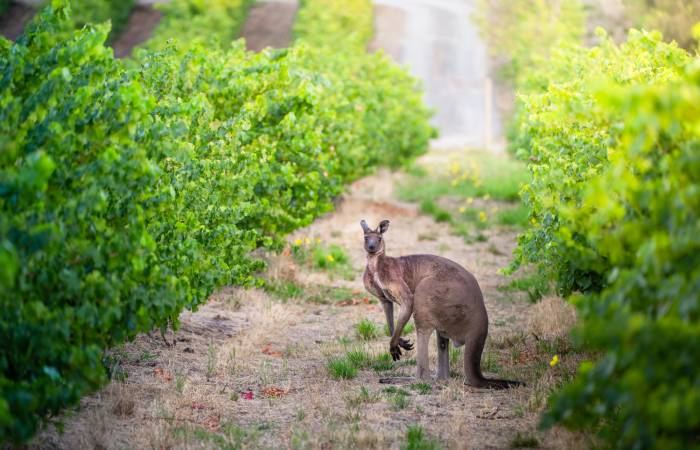KPMG warns of structural challenges in Australian wine industry
KPMG report highlights structural challenges, falling red wine prices and uncertain recovery
2025-09-11

International auditing firm KPMG released its latest report, "Australian Wine Industry Insights," on September 9, 2025, providing a detailed look at the ongoing challenges and emerging opportunities in Australia’s wine and viticulture sector. The report highlights that despite some positive developments, such as the removal of tariffs on Australian bottled wine exports to China, the industry continues to face significant price pressures and structural issues.
The 2025 grape crush reached 1.57 million tonnes, marking the third consecutive year below the ten-year average of 1.71 million tonnes. This lower supply has not led to higher prices as might be expected. Instead, bulk wine pricing for key red varietals like Shiraz, Cabernet Sauvignon, and Merlot has dropped to historic lows. The surplus of red wine remains a major concern, with many growers and commercial wineries exposed to falling prices that are now below production costs.
The roots of these problems trace back to the 1990s when favorable tax policies and aggressive expansion by large wineries led to a surge in vineyard plantings. Although new plantings slowed after 1998, it took another decade before removals outpaced new vines. Even in recent years, there has been little net reduction in vineyard area. After the global financial crisis in 2008, warnings about oversupply went largely unheeded as China emerged as a major export market for Australian wine in the 2010s. The Australia-China free trade agreement in 2015 further boosted red grape prices and reduced stock-to-sales ratios.
However, the COVID-19 pandemic brought new challenges. China imposed steep tariffs on Australian wine, and global demand for red wine declined. By 2022, Australia’s stock-to-sales ratio for red wine had spiked to a record high of 2.77—well above the previous decade’s average of 1.63—leaving a surplus of about 500 million liters of red wine by mid-2023. This surplus was roughly three times what China used to buy annually before tariffs were imposed.
While China’s market has reopened, there is no clear evidence that this will quickly resolve the oversupply or restore balance to the sector. Premium cool-climate regions continue to command higher grape prices than warm inland areas, but unsold wine from premium regions is putting downward pressure on prices elsewhere. For four consecutive vintages through 2025, average red grape prices in warm inland regions have fallen, with early signs suggesting no improvement for 2026.
Many growers have been unable to sell their grapes at all in recent years and have left fruit unharvested or dropped it on the ground—a costly outcome that effectively results in negative returns for those without contracts. Some growers have called for government support to remove or replant vines or switch crops entirely, but past subsidy programs have not been viewed favorably within the industry.
The report notes that both growers and wineries are caught in a difficult position: growers are expected to keep supplying grapes even when it is not economically viable, while wineries must remain competitive but are reluctant to offer incentives to their suppliers. There is still no clear consensus on what constitutes sustainable supply and demand by variety and region.
Internationally, depressed prices are affecting wine markets worldwide as other countries also struggle with matching supply to demand. In this environment, KPMG advises Australian wine businesses to focus on managing local operations carefully and preparing for continued uncertainty.
The report recommends that businesses across the value chain reconsider their expectations regarding bulk red wine pricing and prioritize cash flow management when selling excess inventory. Growers are encouraged to engage early with winery partners about future contracts and varietal management strategies. Both growers and wineries should use forecasting tools to understand cost drivers and make informed decisions.
Financiers are increasingly cautious about lending against bulk wine inventories whose book values may not reflect current market realities. Wine businesses holding large inventories may face tighter lending conditions or requirements for debt reduction. Early engagement with financiers is advised if cash flow constraints arise due to falling inventory values.
Family-owned businesses—which make up about 60 percent of industry participants—are facing additional pressures as younger generations show less interest in taking over operations. KPMG notes that high levels of undeployed capital in private equity and credit funds could accelerate deals and market recovery in the sector, as seen with recent transactions like Vinarchy.
Industry consolidation is expected as larger players with access to financing seek opportunities to expand holdings in premium regions and acquire established brands with strong market presence. For some producers facing insurmountable financial pressures, voluntary administration may be a necessary step toward restructuring rather than closure.
KPMG’s report underscores that while Australia’s wine industry has weathered cycles before, current challenges run deeper than many can recall. The path forward will require careful management of assets, costs, and relationships across the value chain as businesses adapt to a changing global market landscape.
| More information |
|---|
| (PDF)Australian Wine Industry Insights September 2025 |
Founded in 2007, Vinetur® is a registered trademark of VGSC S.L. with a long history in the wine industry.
VGSC, S.L. with VAT number B70255591 is a spanish company legally registered in the Commercial Register of the city of Santiago de Compostela, with registration number: Bulletin 181, Reference 356049 in Volume 13, Page 107, Section 6, Sheet 45028, Entry 2.
Email: [email protected]
Headquarters and offices located in Vilagarcia de Arousa, Spain.